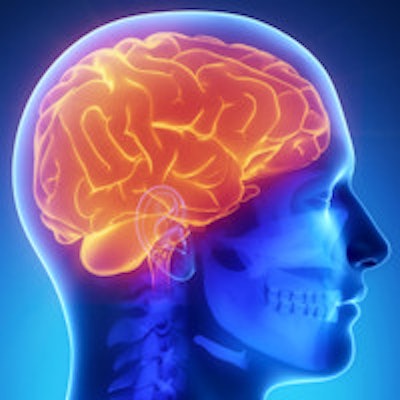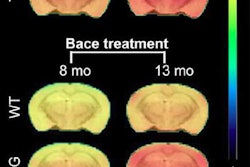
CHICAGO - Studying how the brain makes -- or fails to make -- connections could produce a new imaging biomarker for Alzheimer's disease, potentially allowing patients to be diagnosed earlier and to receive treatment sooner, according to a study presented on Monday at RSNA 2014.
Using diffusion-tensor imaging (DTI) and functional MRI as well as PET scans, the researchers said they were able to detect differences in the brains of patients with mild cognitive impairment.
"This suggests that changes in the brain can be detected earlier in the course of Alzheimer's disease when treatment may be more effective," said Dr. Jeff Prescott, PhD, a radiology resident at Duke University Medical Center.
He and his colleagues mapped neural connections and networks using diffusion-tensor MRI to evaluate brain structure, while they used functional MRI to see the way brain connections occurred. With this information, they constructed an individual connectome -- a map of the brain's neural connections -- for each of 28 patients who had PET amyloid imaging at baseline and at two-year follow-up. Amyloid deposits in the brain are associated with the development of Alzheimer's disease.
The researchers correlated changes in the structural connectome with results from the florbetapir PET imaging. "This study ties together two of the major changes in the Alzheimer's brain -- structural tissue changes and pathological amyloid plaque deposition -- and suggests a promising role for DTI as a possible diagnostic adjunct," Prescott suggested.
The results showed a strong association between florbetapir uptake and decreased strength of the structural connectome in each of the five areas of the brain studied.
The researchers found "statistically significant decreased efficiency and clustering between brain regions during the two years of the study," Prescott said. "These results suggest that it may be possible to use structural network topology as an imaging biomarker of Alzheimer's disease and, therefore, as a target for therapy early in the course of Alzheimer's disease."
"The structural connectome provides us with a way to characterize and measure these connections and how they change through disease or age," Prescott explained at a news conference at the RSNA meeting.
"It seems that connectomics is a very valuable way to look at what is happening functionally in the brain," said press conference moderator Dr. David Hovsepian, clinical professor of radiology at Stanford University. "This will help us as we go through trials to see if we are making a difference or not."
"It is still hard to be certain of causality, but at least we may have an imaging biomarker to help us," Hovsepian told AuntMinnie.com. "I think this is going to be a tool we can use as we start looking at tau imaging and [other things]. This is a great early start."




















